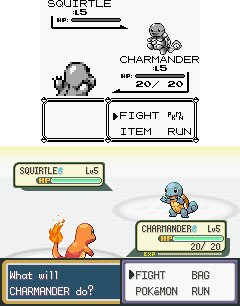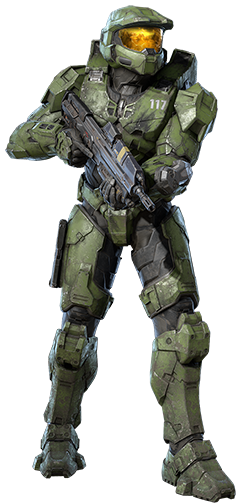
Halo: Combat Evolved is a 2001 first-person shooter video game developed by Bungie and published by Microsoft Game Studios for the Xbox. It was released as a launch game for Microsoft's Xbox video game console on November 15, 2001. The game was ported to Microsoft Windows and Mac OS X in 2003. It was later released as a downloadable Xbox Original for the Xbox 360. Halo is set in the twenty-sixth century, with the player assuming the role of the Master Chief, a cybernetically enhanced supersoldier. The Chief is accompanied by Cortana, an artificial intelligence. Players battle aliens as they attempt to uncover the secrets of the eponymous Halo, a ring-shaped artificial world.

A video game remake is a video game closely adapted from an earlier title, usually for the purpose of modernizing a game with updated graphics for newer hardware and gameplay for contemporary audiences. Typically, a remake of such game software shares essentially the same title, fundamental gameplay concepts, and core story elements of the original game, although some aspects of the original game may have been changed for the remake.

Xbox Game Studios is an American video game publisher based in Redmond, Washington. It was established in March 2000, spun out from an internal Games Group, for the development and publishing of video games for Microsoft Windows. It has since expanded to include games and other interactive entertainment for the namesake Xbox platforms, other desktop operating systems, Windows Mobile and other mobile platforms, web-based portals, and other game consoles.

Halo 2 is a 2004 first-person shooter game developed by Bungie and published by Microsoft Game Studios for the Xbox console. Halo 2 is the second installment in the Halo franchise and the sequel to 2001's critically acclaimed Halo: Combat Evolved. The game features new weapons, enemies, and vehicles, another player character, and shipped with online multiplayer via Microsoft's Xbox Live service. In Halo 2's story mode, the player assumes the roles of the human Master Chief and alien Arbiter in a 26th-century conflict between the United Nations Space Command, the genocidal Covenant, and later, the parasitic Flood.

The Flood is a fictional parasitic alien lifeform and one of the primary antagonists in the Halo multimedia franchise. First introduced in the 2001 video game Halo: Combat Evolved, it returns in later entries in the series such as Halo 2, Halo 3, and Halo Wars. The Flood is driven by a desire to infect any sentient life of sufficient size; Flood-infected creatures, also called Flood, in turn can infect other hosts. The parasite is depicted as such a threat that the ancient Forerunners constructed artificial ringworld superweapons known as Halos to contain it and, as a last resort, to kill all sentient life in the galaxy in an effort to stop the Flood's spread by starving it.

Cortana is a fictional artificially intelligent character in the Halo video game series. Voiced by Jen Taylor, she appears in Halo: Combat Evolved and its sequels, Halo 2, Halo 3, Halo 4, Halo 5: Guardians and Halo Infinite. She also briefly appears in the prequel Halo: Reach, as well as in several of the franchise's novels, comics, and merchandise. During gameplay, Cortana provides backstory and tactical information to the player, who often assumes the role of Master Chief Petty Officer John-117. In the story, she is instrumental in preventing the activation of the Halo installations, which would have destroyed all sentient life in the galaxy.

Master Chief is the protagonist in the Halo game series and spin-off media. Also known as Master Chief Petty Officer John-117, the character appeared in the 2001 video game Halo: Combat Evolved, a science fiction first-person shooter that became a long-running video game series. The character also appears in spin-off Halo media such as the 2012 film Halo 4: Forward Unto Dawn, the 2022 Halo television series, and several graphic novels and books.

Halo 3 is a 2007 first-person shooter video game developed by Bungie for the Xbox 360 console. The third installment in the Halo franchise following Halo: Combat Evolved (2001) and Halo 2 (2004), the game's story centers on the interstellar war between 26th-century humanity, a collection of alien races known as the Covenant, and the alien parasite known as the Flood. The player assumes the role of the Master Chief, a cybernetically enhanced supersoldier, as he battles the Covenant and the Flood. In cooperative play, other human players assume the role of allied alien soldiers. The game features vehicles, weapons, and gameplay elements familiar and new to the series, as well as the addition of saved gameplay films, file sharing, and the Forge map editor—a utility which allows the player to perform modifications to multiplayer levels.
Halo is a military science fiction media franchise, originally developed and created by Bungie and currently managed and developed by 343 Industries, part of Microsoft's Xbox Game Studios. The series launched in 2001 with the first-person shooter video game Halo: Combat Evolved and its tie-in novel, The Fall of Reach. The latest main game, Halo Infinite, was released in late 2021.

Ed Fries ( "freeze") is an American video game programmer and entrepreneur who was the vice president of game publishing at Microsoft during much of the Xbox's life-cycle.

The first-person shooter video game Halo 3 was the focus of an extensive marketing campaign which began with the game's developer, Bungie, announcing the game via a trailer at the Electronic Entertainment Expo in May 2006. Microsoft, the game's publisher, planned a five-pronged marketing strategy to maximize sales and to appeal to casual and hard-core gamers. Bungie produced trailers and video documentaries to promote the game, partnering with firms such as Digital Domain and Weta Workshop. Licensed products including action figures, toys, and Halo 3-branded soda were released in anticipation of the game; the franchise utilized more than forty licensees to promote the game, and the advertising campaign ultimately cost more than $40 million.

Halo 3 Original Soundtrack is the official soundtrack to Bungie's first-person shooter video game Halo 3. Most of the original music was composed by Martin O'Donnell and Michael Salvatori, but also includes a bonus track, "LvUrFR3NZ", which was the winning entry in a contest held before the soundtrack's release. The 2-CD set was released on November 20, 2007.

Halo 3: ODST is a 2009 first-person shooter game developed by Bungie and published by Microsoft Game Studios. The fifth installment in the Halo franchise as a side game, it was released on the Xbox 360 in September 2009. Players assume the roles of United Nations Space Command Marines, known as "Orbital Drop Shock Troopers" or ODSTs, during and after the events of Halo 2. In the game's campaign mode, players explore the ruined city of New Mombasa to discover what happened to their missing teammates in the midst of an alien invasion. In the "Firefight" multiplayer option, players battle increasingly difficult waves of enemies to score points and survive as long as possible; Halo 3's multiplayer is contained on a separate disc packaged with ODST.

Luke Michael Smith is an American writer. He is a staff member at the video game development company Bungie, and is a former video games journalist. Smith wrote for a college newspaper and weekly papers in Michigan before being hired as one of the first new freelance writers for Kotaku. At Kotaku, Smith developed his writing style but soon left the site for a staff position as 1Up.com's news editor. Smith made a name for himself at 1Up, particularly through an article he wrote focusing on problems with the game Halo 2.

Halo: Reach is a 2010 first-person shooter video game developed by Bungie and published by Microsoft Game Studios, originally for the Xbox 360. The sixth installment in the Halo series and a direct prequel to Halo: Combat Evolved, Reach was released worldwide in September 2010. The game takes place in the year 2552, where humanity is locked in a war with an alien theocracy known as the Covenant, which seeks to exterminate humanity. Players play as Noble Six, a member of an elite squad of supersoldiers, known as Noble Team, attempting to stage a defense of the human world known as Reach, which falls under Covenant attack. The game was the last in the series to be developed by Bungie.

343 Industries is an American video game developer located in Redmond, Washington, part of Xbox Game Studios. Headed by Pierre Hintze, the studio is responsible for the Halo series of military science fiction games, originally created and produced by Bungie, and is the developer of the Slipspace Engine. Named after the Halo character 343 Guilty Spark, the studio was established in 2007 after the departure of Bungie after the release of Halo 3.
Bungie, Inc. is an American video game company based in Bellevue, Washington, and a subsidiary of Sony Interactive Entertainment. The company was established in May 1991 by Alex Seropian, who later brought in programmer Jason Jones after publishing Jones's game Minotaur: The Labyrinths of Crete. Originally based in Chicago, Illinois, the company concentrated on Macintosh games during its early years and created two successful video game franchises called Marathon and Myth. An offshoot studio, Bungie West, produced Oni, published in 2001 and owned by Take-Two Interactive, which held a 19.9% ownership stake at the time.

Racing the Beam: The Atari Video Computer System is a book by Ian Bogost and Nick Montfort describing the history and technical challenges of programming for the Atari 2600 video game console.

The first hobbyist-developed game for the Atari 2600 video game console was written in 1995, and more than 100 have been released since then. The majority of games are unlicensed clones of games for other platforms, and there are some also original games and ROM hacks. With only 128 bytes of RAM, no frame buffer, and the code and visuals closely intertwined, the 2600 is a difficult machine to program. and many games were written for the technical challenge. Emulators, programming tools, and documentation are available.

Yars' Revenge is a video game released for the Atari 2600 in 1982. It was created by Howard Scott Warshaw and is Atari's best-selling original game for the 2600.



















